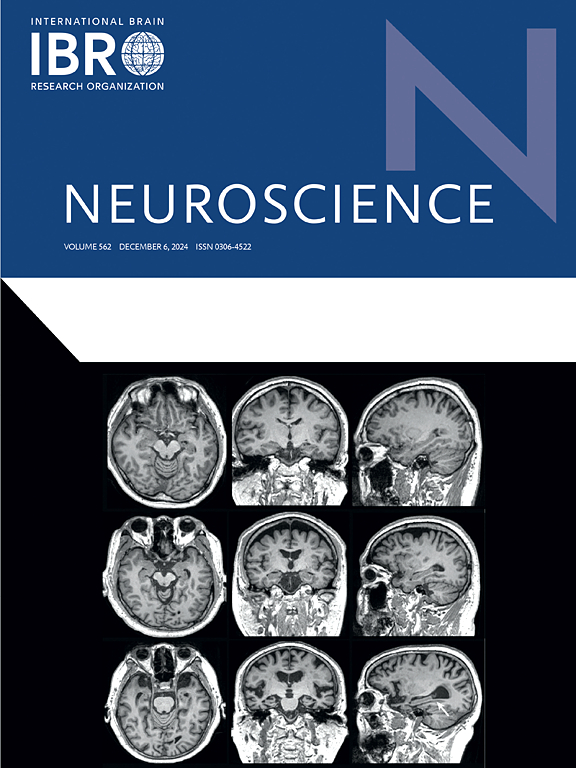Decoding human response inhibition: evidence from GPi and thalamic electrophysiology during a go/no-go task
IF 2.9
3区 医学
Q2 NEUROSCIENCES
引用次数: 0
Abstract
The globus pallidus internus (GPi), a critical output structure of the basal ganglia, plays a central role in motor control by facilitating or inhibiting cortical commands through its connections with the thalamus. This study investigates the involvement of the GPi and thalamus in inhibitory processes during a Go/No-Go task in six patients undergoing deep brain stimulation (DBS) for dystonia or Tourette syndrome. Local field potentials (LFPs) were recorded from externalized DBS electrodes prior to pulse generator implantation. In line with recent computational models of the basal ganglia, we hypothesized differential activity in the GPi for Go and No-Go stimuli, reflecting its role in inhibitory functions. Our findings revealed distinct averaged LFP patterns in the GPi and thalamus to Go and No-Go stimuli, and in addition pronounced differences in beta-band time–frequency activity. These findings provide direct electrophysiological evidence for the GPi’s involvement in proactive inhibition which paves the way for more fine-grained analyses of inhibitory functions.
解码人类反应抑制:从GPi和丘脑电生理在一个去/不去任务的证据
内苍白球(globus pallidus internus, GPi)是基底神经节的一个重要输出结构,它通过与丘脑的连接促进或抑制皮层指令,在运动控制中起着核心作用。本研究调查了6例接受深部脑刺激(DBS)治疗肌张力障碍或图雷特综合征的患者在Go/ o-Go任务中GPi和丘脑参与抑制过程的情况。在脉冲发生器植入前,记录外化DBS电极的局部场电位(LFPs)。根据最近的基底神经节计算模型,我们假设GPi在Go和No-Go刺激下的不同活动,反映了它在抑制功能中的作用。我们的研究结果显示,在Go和No-Go刺激下,GPi和丘脑的平均LFP模式明显不同,此外,β波段时频活动也存在明显差异。这些发现为GPi参与主动抑制提供了直接的电生理学证据,为更细致地分析抑制功能铺平了道路。
本文章由计算机程序翻译,如有差异,请以英文原文为准。
求助全文
约1分钟内获得全文
求助全文
来源期刊

Neuroscience
医学-神经科学
CiteScore
6.20
自引率
0.00%
发文量
394
审稿时长
52 days
期刊介绍:
Neuroscience publishes papers describing the results of original research on any aspect of the scientific study of the nervous system. Any paper, however short, will be considered for publication provided that it reports significant, new and carefully confirmed findings with full experimental details.
 求助内容:
求助内容: 应助结果提醒方式:
应助结果提醒方式:


